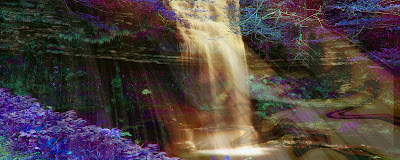Tuesday, February 16, 2010
[us] my sister's house
Tuesday, February 9, 2010
makeshift shelter : wrap-up
My group began the process by collecting as many objects as we thought usable, without any specific design concept in mind. We ended up with a wide array of unrelated materials that we had no idea how to incorporate into a structure. In hindsight, this approach may not have been the best because it led to a lack of focus from the very start. After this, it was difficult to develop a cohesive concept and a focused vision. We also had no conception of the space allocations we would be given, which allowed unrealistic expectations and unfeasible designs to take shape.
Once we were given writing and sketchbook assignments, we were forced to consider and discuss our desired vision of the final product. We had to vocalize the feeling we wanted our structure to evoke. With a new, more focused direction, we were able to put ideas on paper. In my sketchbook, I included quick sketches of each of our ideas as they developed, as well as my own personal ideas. Having sketches helped us express our individual ideas to the group while helping group members visualize the plans. I also had drawings of our final shelter in its intended setting: Foust Park. Looking back at my sketchbook allowed me to track our progress from the beginning to the end of the assignment. Another practice that accelerated our progress was the use of hands-on trials and full-scale models. More often than drawing, we used the actual materials and constructed our thoughts. This allowed us to decided more quickly whether an idea was usable or not.
The advantage of working in groups is that each person is different. We quickly learned to work off of each other’s strengths. An obvious strength within our group was Pamela’s construction experience. She was the ‘go-to’ person when figuring out how to make our shelter structurally sound. The strengths I put to use within the group were keeping the group focused on achieving a cohesive design and lettering. At one point, we had a structure and a vision, but it seemed the parts were functioning independently of one another instead of as an integrated whole. I brought this to the attention of my group and kept us on track to find new ideas. I also worked to keep us away from pieces that were purely decoration. We wanted each element of our design to serve a function as well as being aesthetically pleasing. I also did the lettering on the color block at the beginning of our presentation board and had a hand in the layout of the board.
Overall, I feel our group worked well together. We all had a wealth of ideas and were respectful of each other. Each person contributed to design decisions in the shelter. Once we all had a singular design concept, it was easier for us to generate and incorporate ideas into the project. My personal contributions were the guest book, the location of the hanging PVC elements, and stools of rolled magazines with embedded PVC reinforcements. Other design decisions I contributed were collaborative efforts, such as using paper mache as the roof covering.
The final shelter is one that I am proud of. Looking back at where we began the process and the progress we have made since then makes me appreciate the result even more. Our hard work paid off. It was rewarding to watch people interact with our space, leave sketches, and have a positive response to our work. It made me appreciate the creative process more than I had before. It also served as a sort of validation of our skills as designers. We are able to create a desired environment using unconventional objects. It is nice to know we can create something attractive out of materials that say otherwise. The sketches, photographs, and writings will serve as reminders of the project. However, I also plan to keep a small part of the structure itself.
The personal impact of the project has been to change my creative thought process. I have become more aware of how to pare down extraneous details and keep the design simple. Simple does not necessarily mean plain. The design must simply be thoughtful enough to manipulate materials in innovative ways. Although the design process can seem long and tedious, it is necessary to achieve good work. These shelters also have an outside impact. Of course, the context of the project brings awareness to the disaster in Haiti and their need of aid. It also brings to light the real role of designers. All humans have a basic desire for security, a sense of place. We are the ones who provide that. I feel that these shelters remind people of that need and hopefully they empathize with those who have lost that sense of security.
neighborhoods + communities : reading response
Friday, February 5, 2010
commUNITY case study
Wolfson Building
- Named after Sir Isaac Wolfson who funded the building in 1966.
-This structure was built for undergraduate students at Somerville College in Oxford, England.
- It was one of the first women’s colleges to be founded in Oxford, England.
- The college is located at the southern end of Woodstock Road, with Little Clarendon Street to the south and Walton Street to the west.
- Somerville College was converted into a hospital during World War I.
- It completes the enclosure of the Somerville’s large quad.
- Rooms face onto Watson St. and onto the quad.
- The staircases, located in the freestanding brick towers at each end of the block, form connections between the new concrete structure and its older neighbors.
- Each room has a very large singe-pane square window.
- The window projecting beyond the line of columns forms a lookout post and provides good light for the working wall that carries desks and bookshelves.
- The windows all reflect images of the other buildings located in the quad, bringing them all together.
- On the bottom floor of this building is the “Flora Anderson Hall” where many social events are held.
- Dorms hold events where people meet new friends.
- Living on campus creates a better sense of community and comfortability by seeing the same people each day.
- College campuses have everything you need within a small amount of land. There is food, lodging, social activities, clothing stores, and art supplies right on campus. You can stay in one place and still have everything you need.
- The dorms vibrant social life draws many students to it.
Grant Houses
-The project is located between Broadway and Morningside Avenue, spanning from 123rd Street/La Salle Street to 125th Street.
-The subways lines are 2 to 3 blocks away
-The bus lines are 1 to 2 blocks away
-General Ulysses S. Grant Houses in Manhattan consists of nine buildings, 13 and 21-stories tall with 1,940 apartments housing an estimated 4,519 residents. The 15.05-acre site was completed September 30, 1957 and is bordered by West 123rd and West 125th Streets, Morningside Avenue and Broadway.
-The complex, with the adjacent Morningside Houses, was completed in 1957.
-"At Grant Houses, for instance, 'bricks of mixed pink and buff' were added, with limited success, to break up the monotony of identical brick towers. The designers poorly integrated the colored bricks and they appear as an odd afterthought" (Bloom, 141).
-For maximum sunlight exposure the homes lie directly north of Morningside Gardens, which is a middle income cooperative in Morningside Heights.
-The New York Times noted the racial identification of the first five families to move into the Grant Houses, each from a different racial background.
-At Grant Houses, a few neighbors cared enough about the state of their community, their city and their environment to raise their recycling rate from zero to thirty percent. They've not only made it easy, they've made it possible for tenants here to do the right thing and recycle.
-Coming together for this single cause (to recycle)
-Different people living in one place (has same effect as a dorm)
-The garden project will primarily serve to provide low income grant housed residents access to nutritious and sustainable food.
-The garden project will increase interaction between the Grant Houses
-Lead to the cultivation of personal relationships between university students and Grant Houses residents, and helped to shape a collective vision
Works Cited
Bloom, Nicholas Dagen. Public Housing That Worked: New York in the Twentieth Century. University of Pennsylvania Press. Philadelphia 2008
Maxwell, Rober. New British Architecture. New York: Praeger, 1973. Print.















